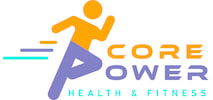STRETCH & REST CARE for the wellness warrior |
|
Let's talk about pain down there. This is Part 3 of the Pelvic Floor Series to help you have a strong, healthy pelvic floor for better core workouts, posture and performance. We've addressed how to do a proper Kegel exercise (part 1) and how to trouble shoot the more common mistakes of the Kegel (part 2). Up next is what you can do to address pain or injuries to the pelvic floor muscles. Pain anywhere in your body can turn off the muscle that is inflamed or hurting. Your pelvic floor muscles can be injured just like any muscle resulting in painful scars and trigger points, weakness, or soft tissue restrictions. Damage to these muscles can occur due to:
Injuries to the pelvic floor muscles can lead to pain or decreased sensation with sex, incontinence (leaking of urine or bowel), or organ prolapse (bladder, uterus or rectum drops lower). Fortunately there are treatment options to help rehab the pelvic floor after injury:
All of these rehab techniques can be done externally (in the pelvic, lower abdominal and back region) or internally (through the vagina or anus). Let’s break this down more. External Pelvic Floor Rehab addresses pain from an outside approach. A Physical Therapist, especially one experienced with manual therapy and Pilates Rehab, will have the skills to provide exercise and treatment to stretch, strengthen, and release adhesions in the muscles around the hips, pelvis, and core. Pilates Rehab with pelvic floor retraining is how I healed from a back injury that almost caused me to retire from PT in my 20's. I still use the exercises along with fascial bodywork tools to help my pelvic floor and core stay healthy and pain-free. These are the techniques I have taught my clients for years, many who had pelvic floor dysfunction or back pain, and now teach in my online camps. Internal Pelvic Floor Rehab addresses pain from an inside approach. These specialists are certified to work internally on the pelvic floor muscles to stretch, strengthen and relax muscles in the lower pelvis. They're usually Physical Therapists or Nurse Practitioners with advanced training in this area. They can do manual therapy internally to release restrictions, biofeedback training to help strengthen, guide vaginal weight training for prolapse (i.e. vaginal pessary training), and design an exercise program to address your specific needs. If you've had an injury to your pelvic floor muscles that has resulted in pain, scarring or incontinence (leaking of urine or bowel), reach out to your OB/GYN, Urologist, or Midwife for a referral to a Pelvic Floor Specialist in your area. Internal pelvic floor rehab is a treatment to consider for decreased sensation or pain during sex as well. If you experience painful orgasms (dysorgasmia), this Mind Body Green article has 17 treatment and tips that you might find helpful. If these more conservative approaches listed here don't help, there are medications and surgical options available. In addition, acupuncture or lifestyle changes for weight loss may be beneficial. These issues can be debilitating but are treatable. Don’t give up. Keep searching for someone to help you with your issue. It's never too late! Mollie P.S. Want more help with your a pelvic floor & core? You'll want to check out our Rest Camp: SHINE™- get on the waitlist here.
0 Comments
Leave a Reply. |
Mollie Miller, PT
|
TERMS OF USE PRIVACY POLICY
Core Power Health & Fitness, Inc. does not provide medical advice. Consult a licensed physician prior to beginning any exercise or nutrition program.
Copyright © 2015 Core Power Health & Fitness Inc.
Core Power Health & Fitness, Inc. does not provide medical advice. Consult a licensed physician prior to beginning any exercise or nutrition program.
Copyright © 2015 Core Power Health & Fitness Inc.


 RSS Feed
RSS Feed